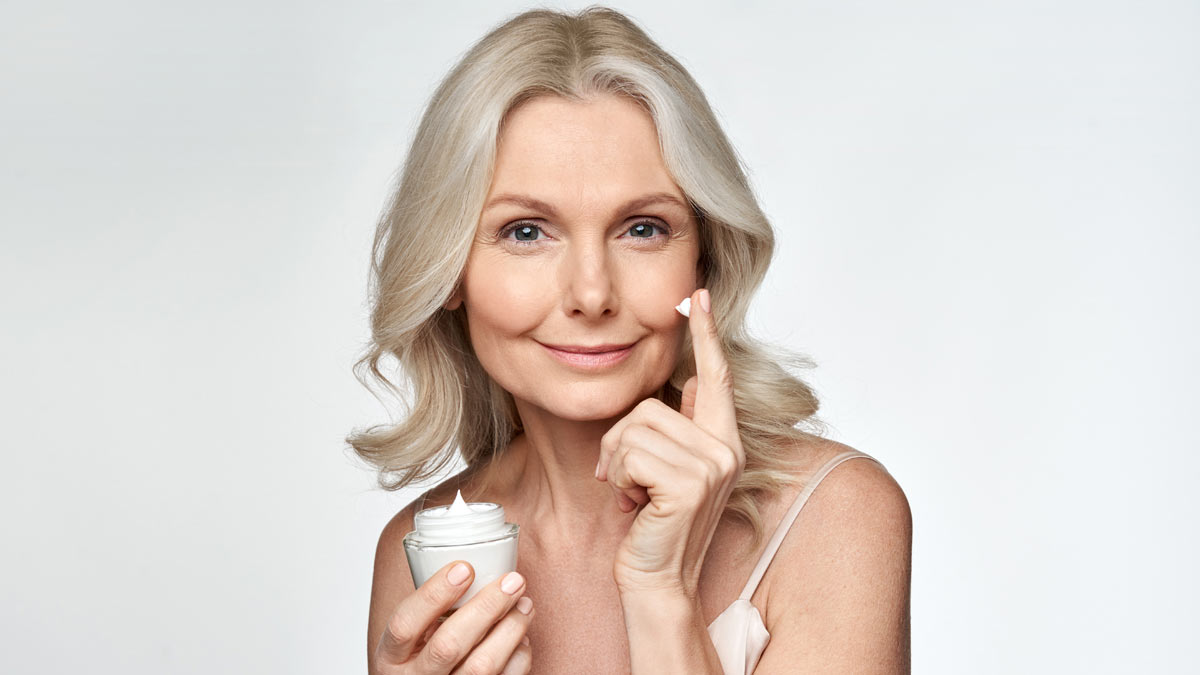Until we discover that ever elusive Fountain of Youth, we will all inevitably experience signs of aging – such as wrinkles. While we cannot defy the process of getting old, we can at least moderate its effects. One way to combat those pesky wrinkles is with over-the-counter treatments.
The best option is retinol or wrinkle cream products that contain retinol as an ingredient, said Marianne McElveen, pharmacist and owner of Kempson Rexall Drugs in Inman. OTC retinol is not as strong as prescription wrinkle creams, so, with a lower dosage, it’s appropriate for first-time users.
“It’s best to start small and slowly build up,” McElveen explained.
Brandi Sherbert, a pharmacist with Mount Pleasant’s Pitt Street Pharmacy, said that looking for OTC wrinkle creams with retinol or retinoic acid – a form of Vitamin A – as active ingredients is key, since retinoids can help repair sun damage and reduce fine lines and wrinkles.
Retinol is available in creams or serums, and it works by stimulating cell turnover, minimizing the effect of wrinkles. It essentially decreases the appearance of fine lines and makes wrinkles less noticeable. Retinol also stimulates collagen production, and increased collagen means fewer wrinkles, McElveen noted.
Additionally, vitamin C – ascorbic acid – and vitamin E creams and serums can address wrinkles. Both contain strong antioxidants that protect against free radicals, which can damage skin cells and cause wrinkles.
You can also look for products that contain glycolic and citric acid, which “remove skin cells and exfoliate skin really well,” according to Sherbert. Further options include green teas, which are an anti-inflammatory, and peptides, which help with cellular production.
There are other more expensive OTC wrinkle cream treatments, but, as Sherbert pointed out, “cost doesn’t always equate to better.”
When you begin using wrinkle treatments it depends on the individual, but McElveen suggested starting younger with a skin care regimen and wearing sunscreen regularly.
“If you start early, it’s going to be better,” she stated.
Sherbert cited different variables such as an individual’s level of outdoor exposure and personal preference, but, like McElveen, she stressed that “sunscreen can’t be started young enough,” when it comes to long-term skin protection.
McElveen recommended rubbing nonprescription wrinkle treatments on at night because they increase sensitivity to sunlight. During the day, she advised using moisturizer and sunscreen.
If you’ve never tried an OTC wrinkle cream, you probably will experience some redness, flaking and skin irritation initially.
“That’s why they recommend starting with a lower potency and building up,” McElveen commented.
Pitt Street Pharmacy generally advises applying wrinkle cream once a day in the evening to a clean, dry face, but Sherbert added that some treatments work better when applied both in the morning and the evening. She also recommended using it with sunscreen and a hat to guard against damage from the sun. Since lower-strength retinoids can cause irritation, she suggested testing OTC wrinkle treatments in a small area – possibly on your forearm – to see if there is a skin reaction.
Patience and perseverance are virtues when it comes to using OTC wrinkle treatments. Sherbert qualified that while these treatments can reduce the appearance of wrinkles and moisturize skin, you must use them consistently, either daily or twice daily, or progress will be short-lived.
“It’s more preventive,” asserted Sherbert, and McElveen explained that most OTC wrinkle treatments require daily use for at least three months before you notice any difference.
“You do have to be pretty committed,” she said.
Moreover, Sherbert cautioned that since OTC wrinkle creams are considered a cosmetic and not a drug, there is little FDA regulatory oversight of product claims, meaning there are no guarantees they contain exactly what is specified on the packaging in terms of ingredients.
Prescription strength or medical grade retinols have higher concentrations of active ingredients and therefore provide faster, longer-lasting results. Botox injections are another option for those who seek immediate effects. These approaches help reduce cell turnover and pigmentation, Sherbert noted.
Rather than waiting around for wrinkles to develop, you can take proactive steps to alleviate their onset and severity. McElveen and Sherbert both advised applying SPF 30 or higher sunscreen daily to protect your skin from exposure to ultraviolet rays since sunlight is a major cause of skin aging. Sherbert underscored that wearing sunscreen and moisturizing every day are the two best ways to preemptively mitigate wrinkles.
Another option is drink a lot of water to stay hydrated, remarked McElveen. Other preventive measures include avoiding tanning beds and smoking.
“Prevention is going to help in the long-term,” Sherbert stated.
Additional sources: Live Science and the Mayo Clinic.
